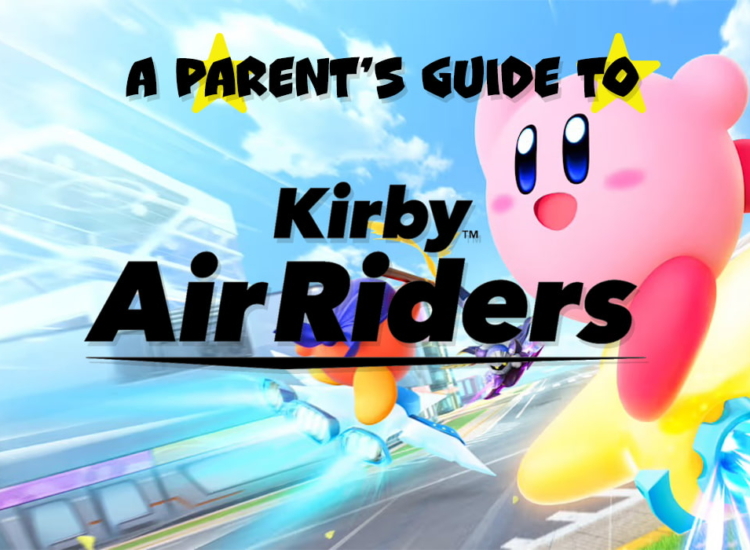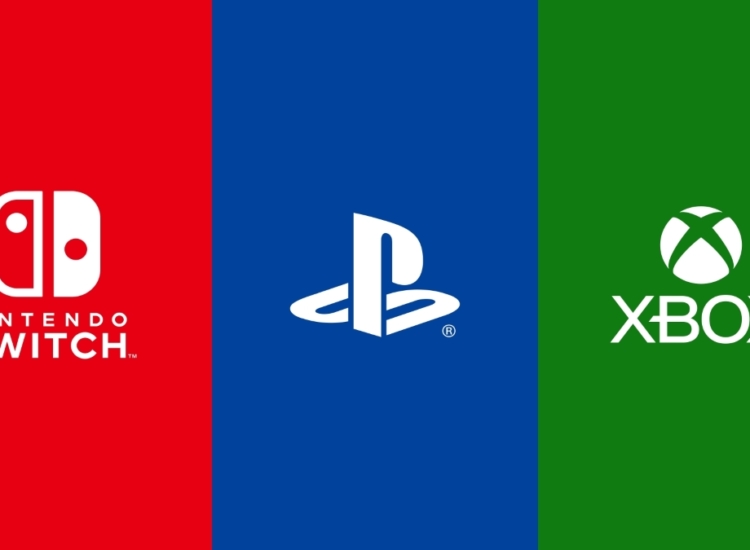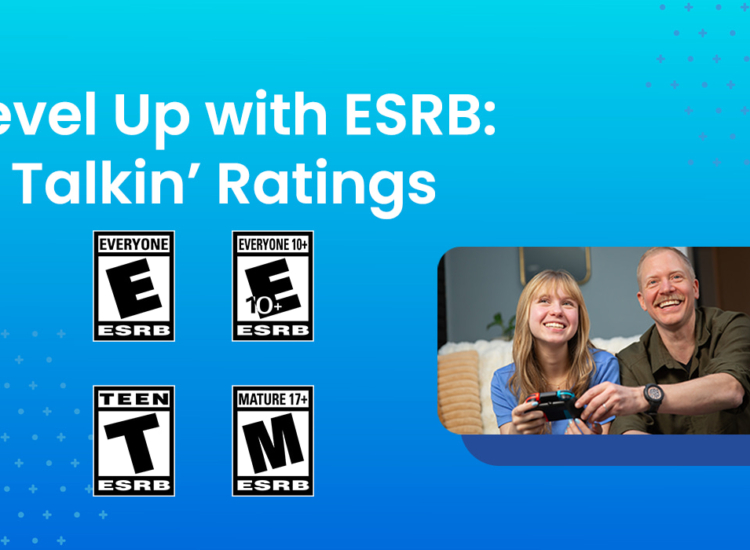What Parents Need to Know About Minecraft
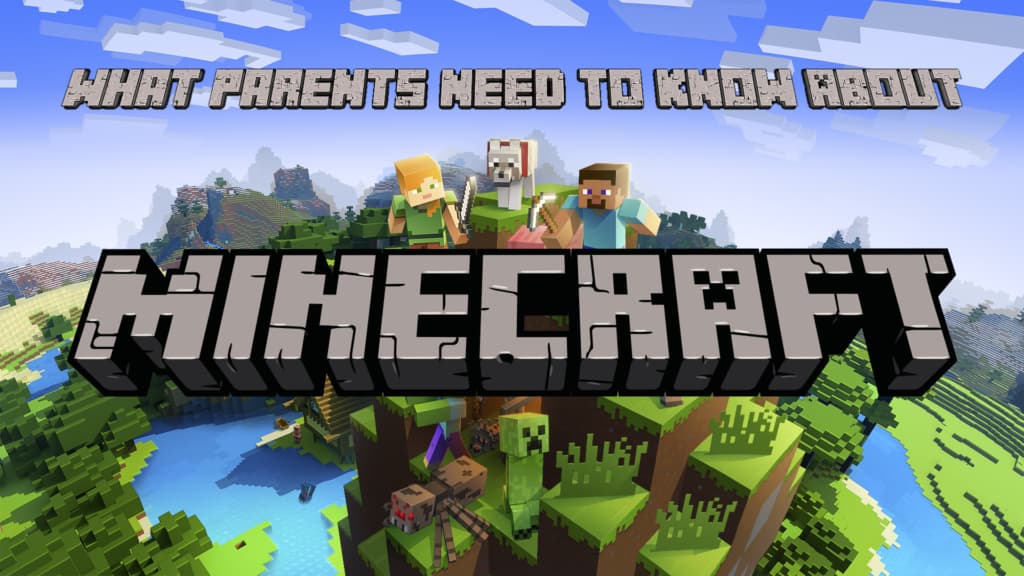
Updated 10/30/2024 – Originally released more than 15 years ago, Mojang Studio’s Minecraft has grown into one of the most recognizable video game franchises in the world, played by millions of people in every country and territory including Antarctica and Vatican City. Furthermore, Minecraft has launched hundreds of streaming careers and content creators’ channels, making it one of the most watched games of all time on streaming platforms. In fact, Minecraft videos have been streamed more than 1 trillion times on YouTube alone!
The open-world sandbox game is filled with the kind of exploration, creation, and community that appeal to adults and children alike. Odds are you’ve been hearing about Minecraft for quite some time. Maybe you’ve learned a lot about it through your kids, or maybe you’re just getting acquainted with it now. Either way, if you’re wondering about what more you need to know about the risks and rewards of your child playing Minecraft, read on.
What is Minecraft?
At its core, Minecraft is a game where players place blocks and go on adventures. This includes anything from crafting simple items like containers or weapons, to building structures like houses, castles, and cities, or even making complex mechanical devices, all within the game’s world. Think of it like an endless world of complex, programmable LEGOs that allows players to imagine, design, and create anything they dream up.
Gameplay in Minecraft is split into two different modes: Survival mode and creative mode.
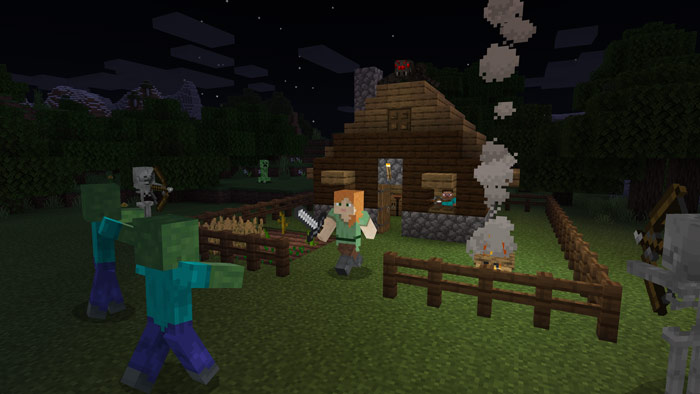
Survival mode is almost like a campaign, where players must forage for food and fend off incoming enemies with various weapons such as swords or pickaxes. Players have to be resourceful when exploring their environment, as they could be attacked by mobs of threatening creatures (such as the iconic Creeper).
The ultimate goal is to use materials to build equipment and structures like houses or gardens to stay safe from the elements. Unlike many similar games, the path to victory is entirely up to the player. The open-world structure invites many different playstyles and encourages experimentation and exploration when dealing with the crafting mechanic. For those that want a structured challenge, the Ender Dragon is the main threat within this mode, and players can try and vanquish it, though it’s not an easy task!
Creative mode offers a more open-ended experience, where players do not have to worry about hunger, health, or being attacked by enemies. In creative mode, players can fly and have access to an unlimited amount of in-game resources. With a full arsenal of materials to use, players create and explore to their heart’s content. Some players opt to create simple structures, while others create vast works of art and engineering. The possibilities are endless!
Is Minecraft Appropriate for Kids?
Minecraft is rated E10+ (Everyone 10+) with a Content Descriptor for Fantasy Violence. It also has Interactive Elements for Users Interact (meaning players can communicate online if they choose) and In-Game Purchases (meaning the game offers the ability to exchange real-world currency for in-game currency or items).
Creating a child account is one of the best ways to make sure your kids have some built in protections to keep their experiences age-appropriate. Microsoft and Minecraft offer child accounts that empower parents to manage and monitor gameplay, multiplayer access, chat settings, and friend requests. This includes default features that limit the ability to interact with strangers. Of course, child accounts also require parental approval for in-game purchases.
In creative mode, players can fly and have access to an unlimited amount of in-game resources.
Minecraft does not have violent or gory content in the base game. Enemies and other creatures will simply vanish when defeated, and while players can kill non-threatening animals for food sources, these displays are not glorified. That said, the ability to create and share content means that some other users may publicly share content that your kids may not be ready to engage with. Fortunately, there are parental controls available to help manage (block, limit, etc.) access to user-created content.
Materials like pickaxes and dynamite are used to explode terrain and enemies, but these are blocky and cartoony in nature. In survival mode, players can perish from starvation, burning, drowning, falling, or being attacked by hostile creatures, among other fates; however, these aren’t shown, and players can simply respawn after succumbing to the elements.
Community Features
Minecraft worlds are hosted on servers. Private servers that are set up by independent members of the community are not controlled or moderated by Mojang Studios. Servers may host some users with whom parents Servers may not be familiar.
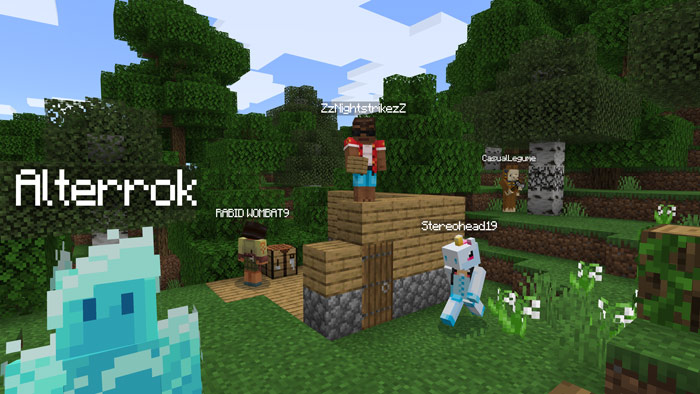 Voice chat is not available in the PC version of the game, but players can use other platforms like Discord to chat while playing. Meanwhile, those playing on game console platforms, like Xbox and PlayStation, do have access to in-game voice chat. Of course, you can block or limit with whom your kids’ can communicate via parental controls. Remember that you can “block” or “mute” other players that may be behaving inappropriately. Additionally, you and your kids are able to report suspicious players and servers in-game and on the Minecraft website for any individuals that may be violating community guidelines.
Voice chat is not available in the PC version of the game, but players can use other platforms like Discord to chat while playing. Meanwhile, those playing on game console platforms, like Xbox and PlayStation, do have access to in-game voice chat. Of course, you can block or limit with whom your kids’ can communicate via parental controls. Remember that you can “block” or “mute” other players that may be behaving inappropriately. Additionally, you and your kids are able to report suspicious players and servers in-game and on the Minecraft website for any individuals that may be violating community guidelines.
You can find more information on reporting players and servers in the links below:
- How to Report a Player in Minecraft: Bedrock Edition | Minecraft Help
- How to Report a Player in Minecraft: Java Edition | Minecraft Help
- How to Report a Minecraft Server | Minecraft Help
Parents should monitor which Minecraft server(s) their children are participating in to determine if the user base is appropriate. Mojang Studios partners with GamerSafer to curate an Official Minecraft Server List where players can easily find third-party servers committed to safety and security.
As an added measure of safety, you can also create a private server for your kids called a Minecraft Realm, which allows you to individually approve or deny who is permitted to enter. Setting up a Minecraft Realm is user-friendly and doesn’t require any technical knowledge. Your kids can also invite friends to play with them in their private Realm (if you allow it!) from any supported device.
You can find step-by-step parental controls guides at ParentalTools.org.
Differentiating Versions of Minecraft
You may notice that there are two different versions: Minecraft Java Edition and Minecraft Bedrock Edition. The major difference between these versions hinges on the platforms on which they are available. Java Edition is available on PC, Mac, and Linux computers, whereas Bedrock is available on Windows 10 and 11, Xbox One, Xbox Series S|X, PlayStation 4 and 5, Nintendo Switch, Fire OS/TV, Android, iOS, Windows Mobile, and Samsung Gear VR. Players using the Java Edition cannot play with players using the Bedrock Edition, so if your child plays Minecraft on a PC and wants to play with their friends online, it would be important to find out which version their friends use.
Parents should monitor which Minecraft server(s) their children are participating in to determine if the user base is appropriate.
There are a number of other differences between the two versions, including how players access user-created “mods” or downloadable additions and maps for the game. I Mods can be as simple as new cosmetic additions that, for example, may change the way your avatar looks. Mods can also be vast and complex, changing how the entire game operates.
In the Bedrock Edition, mods are curated and only accessible in the Minecraft Marketplace, which means the quality will likely be more limited but consistent. The Bedrock Edition enables cross-play across a much broader variety of platforms, whereas the Java Edition is limited to playing with other PC users. You can find more on the differences between Minecraft Java Edition and Minecraft Bedrock Edition here and here.
How Much Does Minecraft Cost?
Minecraft is available for almost every modern console, smartphone, tablet, and computer, but the price of the game differs (generally ranging from $6.99 to $19.99 for the standard editions) depending upon the platforms your kids use.
Regardless of the version, “Minecoins” (Minecraft’s in-game currency) can be used to purchase downloadable content in the Minecraft Marketplace. Note that these purchases are completely optional. Minecoins aren’t available for purchase on all platforms, so it may not even be applicable in your home. For example, PlayStation users have access to “Minecraft Tokens” instead.
Remember that all gaming devices have parental controls that allow you to restrict or limit the ability to spend real world currency on in-game purchases or new games. Remember to visit ESRB’s step-by-step parental control guides at ParentalTools.org to help manage how much your kids can spend, which games your kids can play, with whom, and when/for how long they can play.
Using Minecraft in Schools
Minecraft also has a special version created specifically to facilitate learning in a fun and engaging way. Minecraft: Education Edition is built to help kids learn things like collaboration, creative problem-solving, STEM skills, and more! Some classes you may see:
- CyberSafe – a series of fun, story-based educational adventures designed to help kids safely and appropriately navigate online environments. This includes how they can stay safe online and to help teach them how to keep their personal information private.
- CyberSafe AI: Dig Deeper – an educational adventure designed to teach students (aged 7 – 14) about how they can use AI as a tool to help accomplish their creative goals, as well as some of the potential risks of generative AI. Dig Deeper is supported by a free Family Toolkit to help you navigate conversations with your kids to encourage appropriate use of AI.
- GameCode – one of several computer science classes that teach kids how to design, develop, and create mini-games of their own.
- Planet Earth III – created in collaboration with BBC Earth, kids can play as animals to explore habitats like the Arctic tundra and the Okavango Delta in Botswana.
Minecraft: Education Edition currently has more than 500 lessons and is available for free for anyone with an Office 365 Education account. If you (or your kids’ school) aren’t eligible, you can still try Education Edition with a free Hour of Code.

Patricia E. Vance is the president of the Entertainment Software Rating Board (ESRB). In her position, she leads the teams responsible for assigning age and content ratings to video games and apps, enforcing marketing guidelines adopted by the video game industry, and operating ESRB Privacy Certified, an FTC-sanctioned COPPA Safe Harbor Privacy seal certification program.
